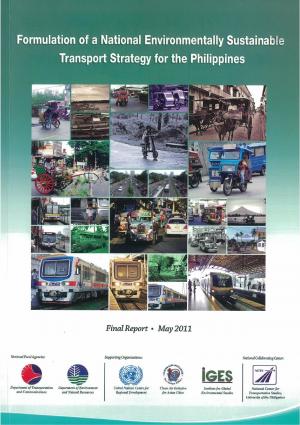How Transportation Marketing Can Transform Public Transport Spaces Into Dynamic Marketing Operatings Systems
Transportation advertising and marketing holds substantial possibility to redefine public transport areas right into dynamic advertising and marketing platforms that notify and involve. As we discover the complex benefits and progressing methods of transportation advertising, it raises the concern of exactly how this transformation might redefine our communications with both brands and the city environment.
Benefits of Transit Advertising

In addition, transit advertising is highly affordable contrasted to typical media. It permits advertisers to accomplish high impressions at lower expenses, taking full advantage of return on investment. The captive audience of travelers offers an opportunity for brands to share their messages to people who are commonly receptive throughout their traveling times.
Moreover, the vibrant nature of transit advertising permits campaigns to be updated regularly, ensuring that messaging continues to be prompt and relevant. This flexibility can be important in replying to market fads or marketing events, maintaining the brand top-of-mind for customers. Last but not least, the prevalent presence of transportation advertising adds to brand name recall; repeated exposure within familiar travel contexts enhances brand recognition and cultivates customer loyalty, ultimately driving sales and improving brand credibility.
Kinds Of Transportation Advertising
Mass transit systems offer different layouts for advertising, each providing to various marketing methods and audience engagement techniques. One noticeable type is external bus and train wraps, which cover the whole automobile and produce a mobile billboard result, enabling high exposure in metropolitan settings. These wraps can capture focus as they traverse busy streets, reaching a varied audience.
An additional prominent format is interior marketing, that includes posters, electronic screens, and ads on transportation seats. These positionings involve passengers during their journey, strengthening brand name messaging in a constrained room. Digital presents, in certain, provide the benefit of vibrant web content, allowing advertisers to upgrade messages in real-time.
Terminal advertising is also substantial, featuring posters, banners, and interactive stands within transportation stations. These advertisements leverage foot web traffic and can target specific demographics based on place.
Finally, marketing partnerships with transit authorities can bring about one-of-a-kind campaigns, such as themed transportation experiences or occasions, enhancing the total engagement with commuters. Each kind of transit advertising supplies distinctive benefits, enabling brand names to tailor their technique to successfully reach their target market within the public transportation community.
Engaging Travelers Effectively
Commuters are significantly swamped with advertising messages throughout their day-to-day trips, making it crucial for brands to involve them in ingenious means. To catch interest in this congested room, marketers have to focus on creativity and relevance. Using distinctive visuals and succinct messaging can substantially improve the probability of interaction.
Interactive components, such as QR codes or augmented truth features, can additionally change static ads right into immersive experiences, fostering a deeper connection with the audience. Brands need to focus on attending to commuters' interests and demands, customizing messages to resonate with their lifestyle, whether with promos for neighborhood organizations or solutions designed to enhance their commuting experience.
Moreover, timing plays an essential role; strategically placing ads throughout optimal travelling hours can take full advantage of visibility and influence. Engaging travelers successfully additionally involves leveraging social networks assimilation, enabling travelers to share their experiences or promos straight from transit platforms, consequently magnifying brand name reach.
Fundamentally, efficient engagement depends upon comprehending the traveler journey and developing engaging, interactive, and appropriate advertising and marketing experiences that not only catch attention but additionally drive action and commitment. By doing so, brand names can transform mass transit into a vibrant marketing platform that reverberates with its audience.

Measuring Advertising And Marketing Impact
How can brands properly examine the performance of their marketing campaign en route atmospheres? Gauging the influence of transportation advertising and marketing calls for a complex strategy that combines qualitative and quantitative metrics. One common method is tracking involvement with mobile basics analytics, where brands can assess foot website traffic patterns and app communications before, during, and after campaigns.
Studies can give useful insights right into brand name recall and consumer sentiment, permitting brands to evaluate just how well their messages reverberate with commuters. In addition, keeping an eye on social media sites engagement relevant to details projects can reveal changes in public assumption and brand name conversation.

Furthermore, collaborating with transportation agencies can enhance dimension accuracy, as they commonly possess thorough demographic information on ridership fads. By incorporating these methodologies, brand names can establish a thorough understanding of their advertising performance, making certain that their projects not just get to but likewise impact their target market properly.
Future Fads en route Advertising
A substantial shift is prepared for in transit advertising and marketing as technical improvements and transforming customer behaviors reshape the landscape. Transit Advertising Philippines. The integration of interactive media and digital displays is anticipated to enhance engagement, permitting brand names to deliver vibrant web content that reverberates with varied audiences. As public transport systems accept clever innovation, marketers will certainly leverage real-time data analytics to tailor messages based on passenger demographics and actions
Moreover, enhanced reality (AR) is poised to change the means travelers communicate with ads. By supplying immersive experiences, AR can change a mundane trip into an appealing story that records focus and fosters brand loyalty. This development will likely motivate advertisers to produce even more experiential campaigns that drive consumer interaction.
Sustainability is one more essential pattern affecting transportation advertising and marketing. As ecological consciousness grows, brand names will increasingly look for to straighten with environment-friendly practices, using lasting products and advertising environment-friendly initiatives within their campaigns.
Final Thought
In conclusion, transportation advertising uses substantial benefits by improving brand presence and involving a restricted target market. As fads progress, the potential for innovative communications in between brand names and commuters is poised to expand, making sure that transportation advertising stays a crucial part of modern advertising and marketing approaches.
Transportation advertising holds substantial potential to redefine public transportation rooms right into vivid marketing platforms that notify and engage. The pervasive presence of transit advertising adds to brand name recall; duplicated direct exposure within familiar traveling contexts reinforces brand name understanding and fosters customer commitment, inevitably driving sales and enhancing brand name credibility.
Exactly how can brands accurately evaluate the efficiency of their advertising and marketing campaigns company website in transportation atmospheres?In conclusion, transportation advertising More Bonuses provides significant benefits by boosting brand exposure and involving a restricted audience. Transit Advertising Philippines. As trends progress, the possibility for innovative communications between travelers and brands is positioned to grow, ensuring that transit marketing remains a crucial component of contemporary advertising methods